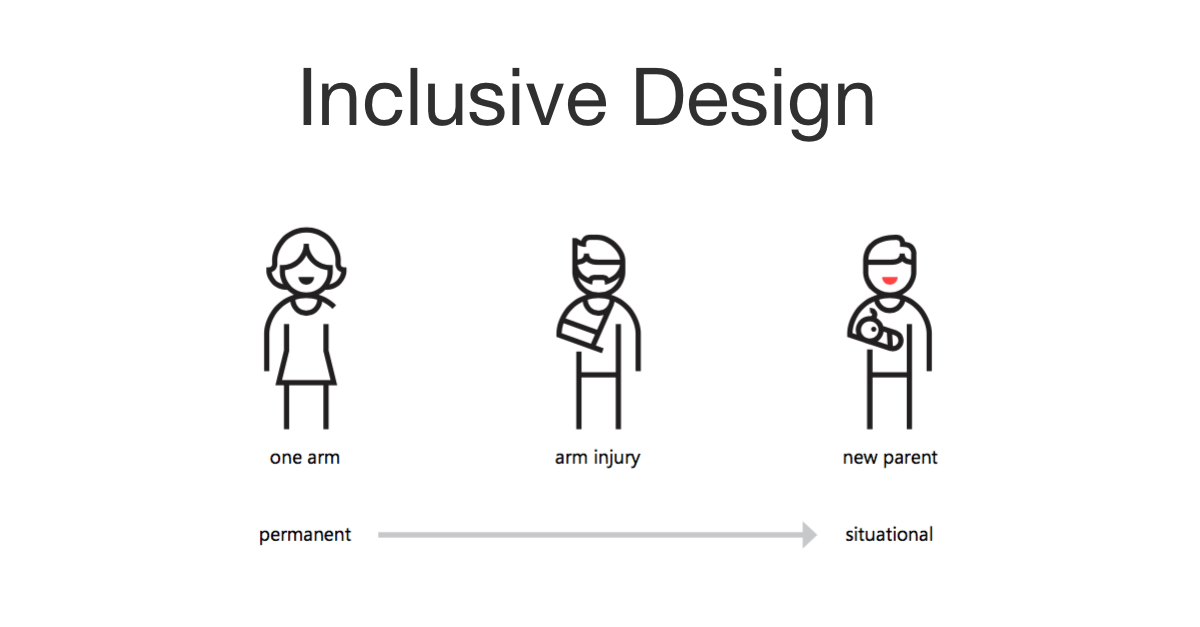What does inclusive design mean? How does it relate to disability and accessibility? And how can it help us create better digital services for everyone? Let's take a look...

For most of us, interacting with digital services as part of our daily lives is now a normal thing to do. As a society we are more dependant on them than ever before and as this reliance continues to increase, so does the importance that they are usable and open to all.
People tend to become excluded when we solve problems for ourselves; using our own abilities and limitations to guide us. As inclusive designers we aim to understand where these exclusions are and then use them as opportunities to create new ideas. This approach not only opens up products and services to more people, but also reflects how people really are and how they adapt to the world around them.
Designing for people with permanent disabilities actually results in designs that benefit people universally.
There are plenty of examples of this in everyday life. How many times have you watched videos with closed captions turned on because you're either in a noisy environment or you don't want to make any noise? Closed captions were originally created for the hard of hearing but the benefits are now shared by a much larger number of people. How great is that!?
Disability = Any situational, temporary or permanent mismatched human interaction
When we look at disability like this it fundamentally changes our outlook from "minority group" to "everyone", and opens our eyes to the countless benefits of designing for inclusivity.
Whether you're operating a device one-handed because you're carrying a cup of coffee, you have your arm in a sling from an injury, or because you're missing a limb completely, your circumstance is similar. Any design improvements that make single-handed use easier will benefit all these people, and is an example of a principle known as "solve for one, extend to many".
It starts with seeing human diversity as a resource for better designs.
I'm passionate about helping organisations design the best digital experiences that work for the greatest number of people. I believe that by shining a light on inclusivity and accessibility during the design process we can not only meet accessibility standards, but draw on the full range of human diversity to create experiences that are truly usable and open to all.
Feel free to connect with me on LinkedIn if you'd like to discuss this further or ask me any questions.
About the author
Hey, I'm Ben - a digital consultant / full-stack web developer with over 20 years of experience.
I've worked across a number of industries including telecoms, education and energy management and am always keen to bring my experience to new industries and business types.
My ability to blend technical knowledge with business acumen allows me to develop intelligent and sustainable solutions that deliver business value, increase productivity and reduce costs.
I work well in teams, whether coaching, collaborating or leading and understand the importance of stakeholder engagement, communication and planning.
My preferred technology stack is PHP / Laravel, Livewire, Alpine.js and Tailwind CSS, but I'm also well positioned to help businesses migrate from older technologies that may be holding them back.
